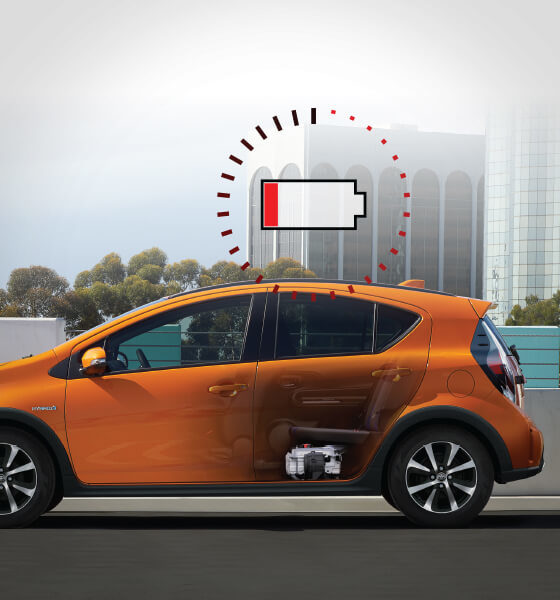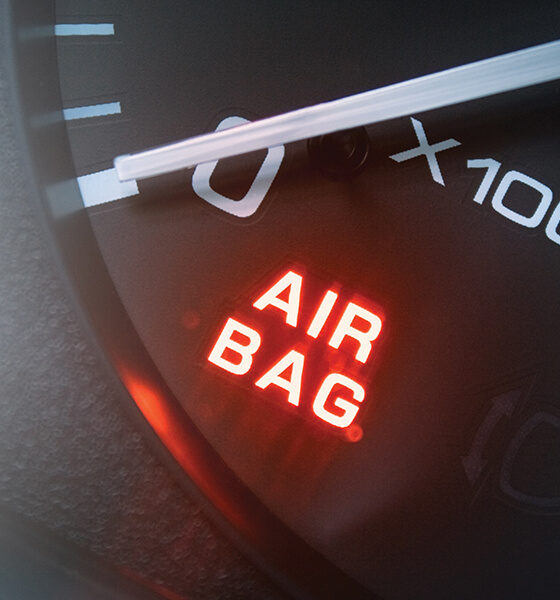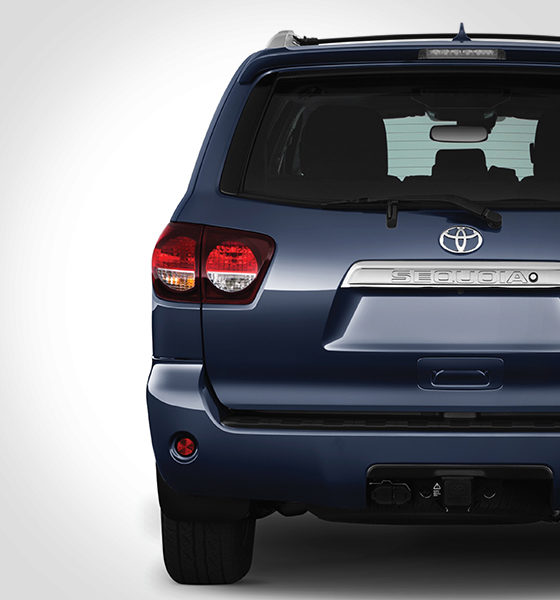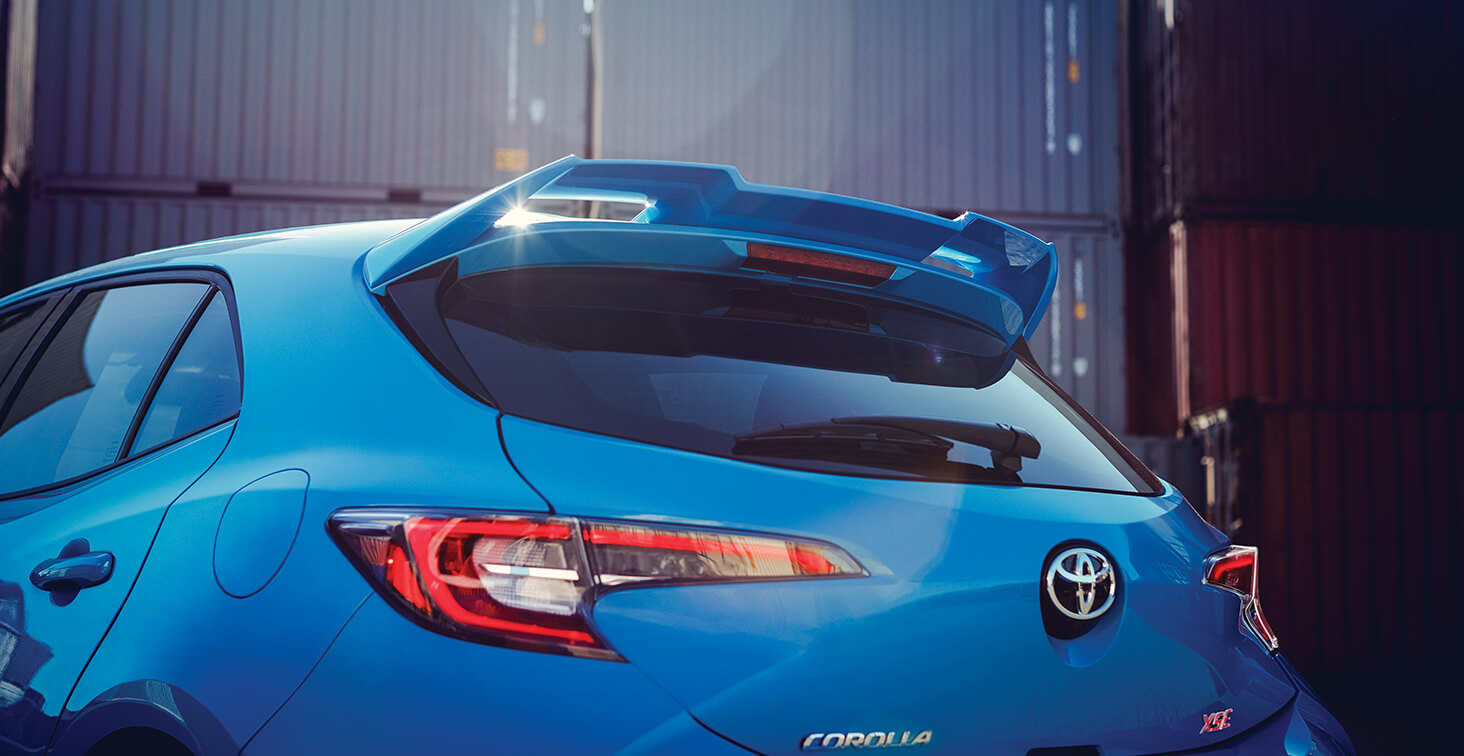
Collision Pros Magazine 2018 | ISSUE 4
2019 Toyota Corolla: The Hatch is Back
INTRODUCING TOYOTA’S NEWEST, MOST STYLISH AND MOST TECHNOLOGICALLY ADVANCED SMALL CAR YET
The 2019 Corolla Hatchback. Built on the Toyota New Global Architecture (TNGA) platform, it’s the first North American application of Toyota Safety Sense 2.0 (TSS 2.0). Here, we’ll review some of the repair precautions and procedures for the new body structure, for High-Strength Steel (HSS) and for TSS 2.0.
HOUSE OF STYLE
The new Corolla Hatchback is lower, wider and shorter than its predecessor, the Corolla iM. Its aluminum hood sits two inches lower than before, and the front end is accented by slim, J-shaped Bi-Beam LED headlamps and rear LED taillamps with a diffusing inner lens. After a frontal collision, the aluminum hood may require special care and/or replacement.
The XSE trim level is available with an Adaptive Front-Lighting System (AFS), which allows the Bi-Beam LED units to “follow” the front wheels when turning so the driver can see what’s coming around the corner. In the case of a front collision, AFS will require recalibration to ensure proper alignment, as will the Dynamic Radar Cruise Control.
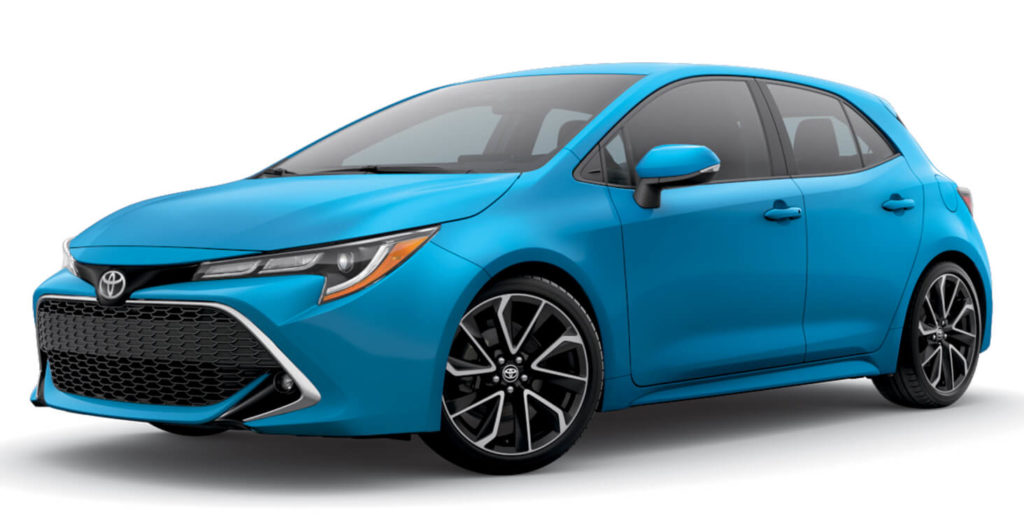
BUILT TOYOTA TOUGH
To reduce weight and improve fuel efficiency, the hatchback is made from Toyota Super Olefin Polymer (TSOP) and Acrylonitrile Butadiene Styrene (ABS) mated to a steel frame. The Corolla Hatchback is also built on the TNGA C platform using a mix of adhesives, spot and laser screw welding, and additional bracing—top to bottom and side to side—to increase overall strength and reduce weight. Road feel and fuel efficiency are enhanced thanks to use of aluminum, HSS and Ultra-High Strength Steel (UHSS) in the chassis and body. Torsional rigidity is improved 60 percent compared to its predecessor, and additional seals are used in the body panel gaps to reduce road noise.
HSS and UHSS require special repair and welding methods. If HSS or UHSS structural properties are reduced by a collision or improper sectioning and welding repairs, the vehicle can no longer perform as designed, which could compromise occupant safety in a subsequent collision.
To add strength, the side structure is fused together using laser screw welding in addition to spot welding, which improves overall cabin strength. Now, for example, the door opening includes about 30% more welds. Collision repair facilities cannot easily duplicate the laser screw welding style, so be sure to attend Welding Techniques for Collision Repair course #300 at one of Toyota’s training centers to learn the appropriate replacement welding techniques.
TOYOTA SAFETY SENSE 2.0
The all-new Corolla Hatchback also comes standard with TSS 2.0, the second generation of TSS. An updated safety package adds several new active-safety technologies and capabilities, including:
- Pre-Collision System with Pedestrian Detection (PCS w/PD)
- Full-Speed Range Dynamic Radar Cruise Control (Full-Speed DRCC)
- Dynamic Radar Cruise Control (DRCC) – Manual Only
- Lane Departure Alert with Steering Assist (LDA w/SA)
- Automatic High Beam (AHB)
- Lane Tracing Assist (LTA)—new
- Road Sign Assist (RSA)—new
- Seven standard airbags
- Toyota’s Star Safety System, which includes Enhanced Vehicle Stability Control, Traction Control, Electronic Brake-force Distribution, Brake Assist, Anti-lock Braking System, and Smart Stop Technology
- A Blind Spot Monitor (BSM) standard on XSE and available on SE (BSM does not include Rear Cross Traffic Alert)
- Backup Camera
“Always confirm proper positioning, calibration and operation of Safety Sense components before returning the vehicle to the customer.”
— James Meyer
NJ Collision Trainer
Many of these safety systems use front-grille-mounted radars and in-vehicle windshield-mounted cameras to detect vehicles and pedestrians, as well as sensors mounted behind the rear bumper to detect vehicles in the side view mirror blind spot. Even a minor fender bender can affect the alignment of these sensors, so be sure to recalibrate the sensors and check for proper operation of those safety features after any accident or when the windshield is replaced.
The all-new 2019 Corolla Hatchback offers style, utility and safety. Be sure every repair meets Toyota’s high-quality “Fix It Right the First Time” standards to maintain the integrity and safety of the vehicle after a collision.
